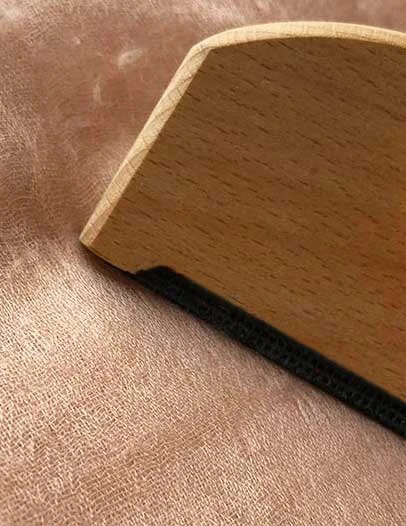Despite the exquisitely smooth texture, cashmere wool is produced from fibres of true sturdiness and durability. This makes for a garment of the highest quality, which can easily withstand several years of poor maintenance. However, why should you risk ruining your favourite clothes if learning to take care of them is so simple
What is ‘pilling’ and why does it occur
Pilling is a natural phenomenon that occurs in cashmere and ordinary wool. The word ‘pilling’ comes from ‘pills’, which are little fuzz balls originating from the friction of wool fabric. It is important to know that, contrary to popular belief, the presence of pilling is not an indicator of poor quality of the yarns; however it may cause minor discomfort and make your outfits look slightly unkempt. This is why it is essential to learn how to prevent pilling in order to maintain a polished appearance at all times.
Before diving into the procedure, let’s understand why pilling happens in the first place. It is a purely organic process that should be expected when wearing natural materials, especially with delicate fabrics.
It generally occurs more often to light garments for a simple reason:
in this case the yarn is less tightly knitted compared to heavier apparel. Therefore, pills are more likely to come out of finer fabrics. This is why mid-season garments, having a typically light and bouncy silhouette, are the most affected by pilling. However, that should not discourage you in pursuing the best achievable look. Since the pilling effect is entirely manageable, you can afford the luxury of owning a variety of cashmere items suitable for each season, and keeping them pills-free. In the industry, it is usual to rate overall pilling resistance based on a chart that goes from 1 to 5, with 5 being the highest grade achievable. A high end cashmere sweater is usually awarded a 3 or 4 on the scale. A grade 5 is generally considered unachievable as it would irreparably compromise the softness of the fabric (even on heavier knits). Therefore, the most effective way to prevent and reduce pilling is to take care of your cashmere apparel at home,
simply following these few tricks:

- Do not wear your Martus knitwear for extended periods of time, as this might cause the fibres to slowly loosen up. Ideally, you should wear it for a few hours, never twice in a row, and then let it sit for 24/48 hours.
- Water is your cashmere’s best ally. Wash each item according to the Martus guide for washing and effectively restore the sturdiness of the fibres. Cashmere is an entirely organic thread and therefore reacts wonderfully to the natural elements. A goat’s mantle is the protection that nature has given to the animal to shelter from rainy climates. For this reason it adapts very well to being washed, and turns out looking even better than before!
- Do not wear cashmere under bumpy or accessorised clothes. Any over top should have a smooth internal surface, without buttons, labels, zippers and any other protruding attachment that could leave a mark on the fabric. Ensure all superfluous accessories inside of your coats are removed, and do not keep bulging objects in the pockets. Avoid wearing long necklaces that may be pressed against the sweater for long periods.
- When you notice the first case of pilling, gently stroke the fabric with a clean velvety brush for wool.
- Do not wear cashmere in situations where you could sweat. Your body temperature affects the fibres and allows for pills to form: this is why pilling generally occurs in areas such as the armpits. Always remember, in case of pilling, follow this procedure: wash the sweater, brush it if necessary and let it sit for a while.
Pill-free jumpers
There are two industrial applications that allow cashmere producers to prevent pilling.
These are:
-adding a blend of 5% elastomer to the yarns, which shrinks the fibres and considerably reduces the number of pills.
-coat the yarns with a silicon compound through a special processing. This way, the fibres may literally stick to one another.
Both procedures raise one major issue: the quality of the fabric is completely compromised. In fact, the texture of a sweater is visibly changed through this operation. Moreover, elastomer and silicon blends are conducive to several drawbacks, including skin intolerance, increased perspiration and odour release. With so many disadvantages, it is certainly wiser to invest in clothing of better quality – especially since pilling is entirely manageable!
Therefore, our recommendation is to always choose carefully your next cashmere piece. Favour quality over hyper-processed fibres. Martus cashmere is silicon and elastomer free, and requires minimal care.



